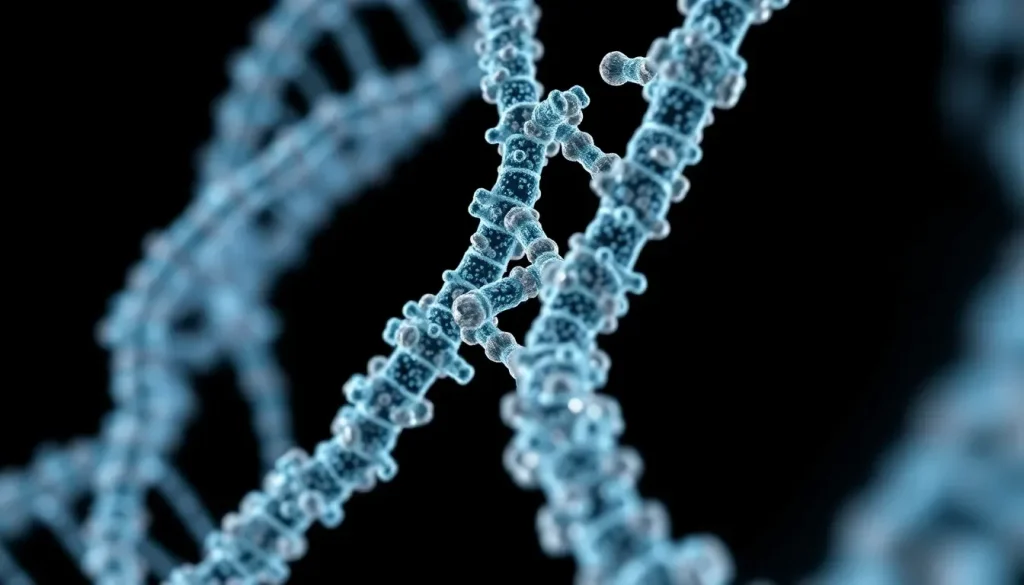DNA data storage in living bacteria: bits and bytes explained

Imagine a world where all the digital data we generate could be stored in living organisms. This concept has transitioned from science fiction to reality, as researchers have successfully harnessed the power of E. coli bacteria for data storage. With this innovative approach, the future of data preservation may be as simple as a petri dish.
Recent breakthroughs by a team from Tianjin University in China have demonstrated the potential of using living cells as stable DNA storage mediums. In a groundbreaking experiment, these scientists managed to store and retrieve an impressive 445KB of digital data encoded within the DNA of E. coli bacteria.
How is digital data stored in DNA?
Traditionally, data storage in DNA has relied on synthetic DNA stored in glass vials or other inert environments. However, this Chinese research team has taken a significant leap by inserting synthetic DNA directly into living cells. This method not only allows for data storage but also leverages the natural replication processes of living organisms.
The researchers utilized longer DNA fragments, with lengths reaching up to 11,520 nucleotides, compared to the shorter fragments typically used in synthetic methods. This advancement is crucial, as longer sequences can enhance data integrity and retrieval efficiency.
Understanding the role of oligonucleotides
At the core of this innovative storage method are oligonucleotides, which are short strands of DNA. The team worked with over 10,000 oligonucleotides, collectively representing 2,304 kilobit pairs (kbps). A kilobit pair is a unit of DNA length measurement equivalent to 1,000 base pairs, where each base pair consists of two of the four nucleobases found in DNA: adenine (A), thymine (T), cytosine (C), and guanine (G).
The team encoded the source binary data into the 4-letter DNA alphabet formed by these nucleobases. To enhance fault tolerance, they incorporated a redundancy of 1.56 percent at the software level to account for potential physical losses of some oligonucleotides. The oligonucleotides were then assembled into plasmid vectors, which are twin-stranded circular DNA molecules that replicate independently within the cell.
Stability and efficiency of DNA data storage
One of the most significant advantages of this method is the stability of the oligonucleotide pools in a mixed culture of E. coli cells. The researchers demonstrated that the data could remain intact even after multiple divisions, known as "passages," where a culture is split into two and allowed to grow. They successfully conducted up to five such splits, ensuring that the integrity of the digital information was preserved.
The reading of the digital data was accomplished through DNA sequencing. This involved isolating the plasmids containing the digital information from a large liquid culture. Following a digestion process, a substantial number of oligonucleotides were recovered with minimal contamination from the host cell's own DNA, which was effectively removed using bio-reagents.
Advantages of using living cells for data storage
The research findings highlight several key advantages of using living cells for DNA storage:
- Long-term stability: Living cells maintain DNA with high fidelity over extended periods, ensuring reliable data preservation.
- Cost-effectiveness: The replication process within cells is economically efficient, reducing the overall costs of data storage.
- High data density: DNA can store vast amounts of data in a compact form, making it an attractive option for archival storage.
- Scalability: As cells reproduce, the amount of stored data can increase, allowing for scalable solutions in data storage.
Looking ahead: The future of DNA data storage
This pioneering research represents the largest-scale archival data storage in living cells reported to date. The findings pave the way for further developments in biological data storage, combining the advantages of in vitro synthesis capabilities with the biological power of living cells. Such advancements are crucial for developing practical solutions for cold data storage on a large scale, addressing the ever-growing demand for sustainable and efficient data management.
For those interested in exploring the implications of DNA as a data storage medium, the following video provides a comprehensive overview of the topic:
Future challenges and considerations
While the prospects for DNA data storage are promising, several challenges remain:
- Technological limitations: Current techniques for data encoding and retrieval need to be further refined for practical applications.
- Ethical considerations: The manipulation of living organisms for data storage raises ethical questions that need to be addressed.
- Environmental impact: Understanding the ecological implications of large-scale DNA storage systems is essential.
The potential of DNA as a revolutionary data storage solution is becoming increasingly clear. With ongoing research and innovation, we may soon witness a paradigm shift in how we store and manage our digital information.
The paper detailing this research is titled “A mixed culture of bacterial cells enables an economic DNA storage on a large scale,” published in Communications Biology, volume 3, Article number: 416 (2020), authored by Min Hao, Hongyan Qiao, Yanmin Gao, Zhaoguan Wang, Xin Qiao, Xin Chen, and Hao Qi.




Leave a Reply